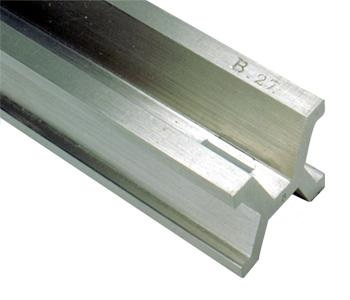
How was the meter (metre) defined? In 1791 it was defined as one ten-millionth of the distance from the equator to the North Pole.
The word “meter” comes from Greek and means “to measure” or “to count.” That’s why the “meter” in speedometer and altimeter doesn’t mean the unit of distance.
The meter measurement comes from France and two of the original meters can still be found there. They are made of marble and attached to the wall. They were called “mètre étalon” and they were posted in 16 places around Paris by the Academy of Science on March 26, 1791. The two that survive have both been moved from their original locations, but originally, people would have brought measuring sticks and rulers to Paris to check that what they were using was actually a meter.
Before the meter was standardized, people used different units of measurement. People across Europe used miles, feet, inches, pounds, yards, ell (cubit), and many more. (Incidentally, an ell meant arm and it was the distance from the elbow to the tip of the fingers and can be seen in the word “elbow”). These measurements were not standardized and they were different from place to place. It is estimated that France had 800 different measures of weights and that they varied so often that there were over 250,000 different measurements. It took a revolution for the problem to be fixed. The French Revolution, that is. The revolutionary government wanted a complete break with the corruption of the aristocracy and they saw units of measurement as one of those corruptions. However, the idea behind the metric system had begun in 1670, when Gabriel Mouton proposed it. It wasn’t popular until the revolutionary government insisted on the system being used. Napoleon banned it in 1813, but it was brought back in by 1840.
Having a system of measurement was all well and good, but they needed a method of ensuring the system was the same in all places. This had become more of a problem with the increase in international trade brought about by the Industrial Revolution. Scientists thought they had cracked the problem when they realized they could use pendulums as an accurate measure. They made a pendulum that took two seconds to swing forward and backward once. This is called a seconds pendulum and to get a pendulum to swing at this rate, you need a string that is 1 meter long. The scientists reasoned that it would always require a pendulum of 1 meter in length to get a pendulum with a period of two seconds and that length would never change. Unfortunately for them, that length does change because the pendulum is affected by gravity which is not exactly the same all over the Earth.
The French Academy of Sciences decided they needed something that wouldn’t change. They decided that a meter would be defined as one ten-millionth of the distance from the equator to the North Pole. That made sense, but the trouble was that nobody knew exactly how far that was. The Academy tasked Jean Baptiste Joseph Delambre and Pierre Mechain, two astronomers with measuring the distance. They obviously couldn’t measure the entire distance, so they measured the distance from a belfry in Dunkirk to Montjuic Castle in Barcelona. They would follow the meridian that went through Paris and they would measure in opposite directions. Once they had reached their goal, they would measure back again to make sure their measurements were accurate. They had the most technologically up-to-date equipment and it took them seven years to finish the task. They had to measure through warzones, revolutions, and they faced many other problems along the way. However, once they were done, the Academy of Sciences could produce their meter. They finished the calculations and had the meter cast in a bar of pure platinum. Et voila.
Except, it isn’t as easy as that because the Earth is not a perfect sphere. The thought that the Earth would be uniform and it wouldn’t matter where they measure, but the Earth isn’t a perfect sphere because it bulges out in different places. The distance from the poles to the equator changes depending on where you measure it. So, the meter that France used to verify all other meters, was, probably, not exactly a meter. It wasn’t out by a lot, but it wasn’t perfect.
These days, a meter is defined by the speed of light. A meter is the length of the path travelled by light in a vacuum during a time interval of 1/299,792,458 seconds. That is not something we can measure with a tape measure. For most things in life, we don’t need to have an exact meter. However, for physics experiments, and possibly building in space, it will be necessary to have a perfect meter. And this is what I learned today.
Image By Unknown author – This image was copied from wikipedia:en. Transwiki approved by: w:en:User:Dmcdevit. The original description was: National meter #27. From w:en:NIST museum.Original from National Prototype Meter No. 27, Room 4, Weights and Measures, NIST Virtual Museum, US National Institute of Standards and Technology (NIST) website. No copyright information accompanied this image., Public Domain, https://commons.wikimedia.org/w/index.php?curid=2721652
Sources
https://education.nationalgeographic.org/resource/meter-defined/
https://en.wikipedia.org/wiki/Metre
https://www.history.com/news/who-invented-the-metric-system
https://www.atlasobscura.com/places/the-last-original-standard-metre-paris-france
